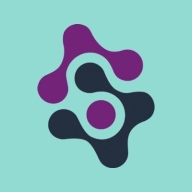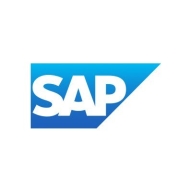

We compared LeanIX and Ardoq based on our user's reviews in 4 parameters. After reading all of the collected data, you can find our conclusion below.
Users find LeanIX to be more cost-effective, with a straightforward setup process and flexible licensing options. They appreciate its robust reporting capabilities and integrations, however, they desire a more intuitive user interface and better integration with third-party tools. Users value Ardoq's flexible data modeling and collaborative features yet seek better integration with other software applications and more customizable reporting options. Ardoq's excellent customer support is consistently praised, while LeanIX's customer service is also commended for its responsiveness and expertise. LeanIX excels in pricing transparency and support, while Ardoq stands out in flexibility and collaboration.
Features: LeanIX stands out for its robust reporting capabilities, customizable data structures, and integrations with other tools, providing detailed insights and improving efficiency. Ardoq offers flexibility in data modeling, collaboration features, and an intuitive interface for non-technical users.
Pricing and ROI: LeanIX offers a cost-effective setup process with transparent pricing and flexible licensing options. Users appreciate the value they receive from the pricing structure and the support provided by the team. Ardoq also offers competitive pricing with reasonable setup costs and flexible licensing options. LeanIX excels in identifying redundant systems, resource allocation, and streamlining processes, leading to substantial efficiency and cost savings. Ardoq focuses on an intuitive interface, customizable features, and workflow streamlining, contributing positively to organizational success.
Room for Improvement: LeanIX users have mentioned the need for a more intuitive user interface, better integration with third-party tools, improved reporting capabilities, faster performance, and fewer glitches. Ardoq users are seeking better software integration, customizable reporting options, enhanced training resources, and improved customer support responsiveness.
Deployment and Customer Support: LeanIX has a user-friendly, quick setup process that can be completed by a small team in approximately three days. Ardoq has a more complex setup that can be challenging, with options for specific cloud deployment models such as AWS and Azure. LeanIX excels in providing exceptional technical assistance and fostering collaborative engagement between departments, featuring dedicated success managers. Ardoq, on the other hand, offers efficient internal support and extended paid assistance options, earning praise from customers.
The summary above is based on 14 interviews we conducted recently with LeanIX and Ardoq users. To access the review's full transcripts, download our report.
| Product | Market Share (%) |
|---|---|
| LeanIX | 13.1% |
| Ardoq | 3.3% |
| Other | 83.6% |


| Company Size | Count |
|---|---|
| Small Business | 8 |
| Midsize Enterprise | 3 |
| Large Enterprise | 12 |
A Dynamic and Data-Driven Approach to Enterprise Architecture
Engage and connect stakeholders across the organization with business-friendly visualizations understandable to all.
SAP LeanIX provides enterprise architecture solutions that modernize IT and transform businesses, integrating AI-enriched, SaaS tools to enhance architecture visualization and evolution.
Embracing a comprehensive approach, SAP LeanIX supports organizations globally with tools that foster IT landscape optimization and forward-looking architecture creation. It offers solutions for real-time IT overviews, risk management, and architectural planning. These capabilities ensure that enterprises have the flexibility and insights needed to maximize their business impact and align their IT strategies with their organizational goals. SAP LeanIX is recognized for its ease of use, flexible reporting, and the ability to seamlessly integrate various data sources.
What features define SAP LeanIX?SAP LeanIX is implemented across industries to enhance enterprise architecture, application portfolio management, and business capability mapping. Its use extends into cloud governance, data flow analysis, and integration architecture, allowing multiple organizations to improve operational visibility and strategic planning. It also enables cataloging systems and app rationalization while linking capabilities for improved lifecycle management.
We monitor all Enterprise Architecture Management reviews to prevent fraudulent reviews and keep review quality high. We do not post reviews by company employees or direct competitors. We validate each review for authenticity via cross-reference with LinkedIn, and personal follow-up with the reviewer when necessary.